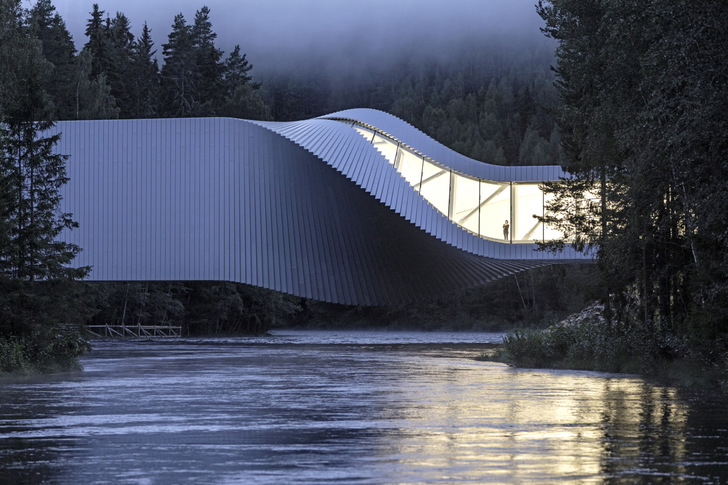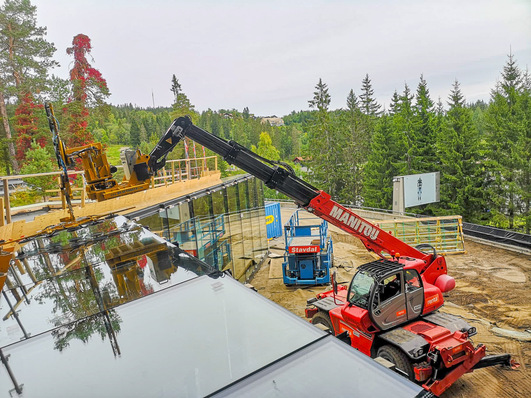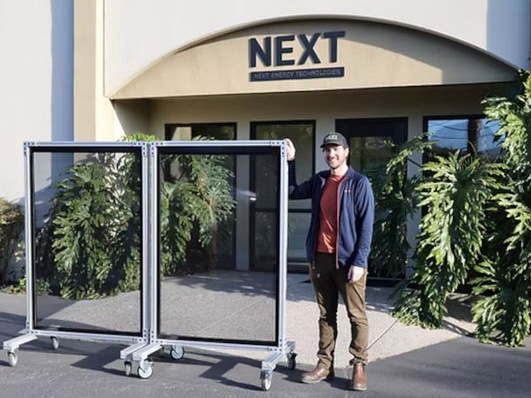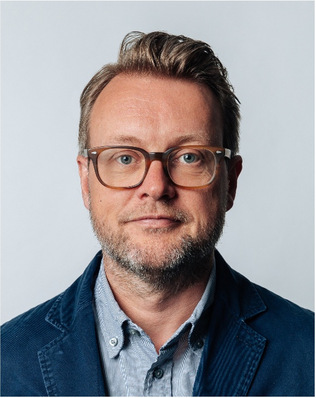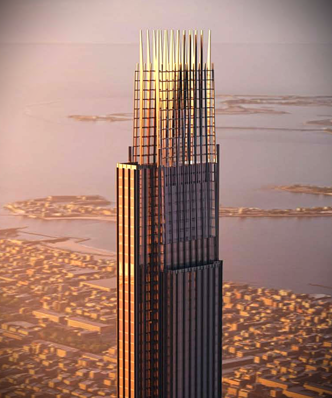The newly constructed building The Twist crosses the Randselva River at Jevnaker, and thereby completes a circular path that was laid out for the sculpture park of the local Kistefos Museum. The structure is a white cuboid that twists by 90 degrees around its long axis, creating a spectacular bridge in the process: The part of the building that started out flat and "lying down" becomes vertical and "stands upright" by the time it reaches the other side of the river.
As it twists, the 60-metre-long structure, wrapped in aluminium and glass, makes up the difference in elevation between the two river banks. Inside, the twist creates three areas with different characteristics: Facing north, there is the bridge section with a panoramic view of the river and the museum building, a former paper mill.
Flowing rooms
The gallery space to the south is characterised by high ceilings and the tapering skylight resulting from the glass facade. In the intermediate area, the actual twist, the verticals and horizontals dissolve. In a flowing movement, the wall becomes the floor; the transformation of the ceiling into the wall is also fluid.
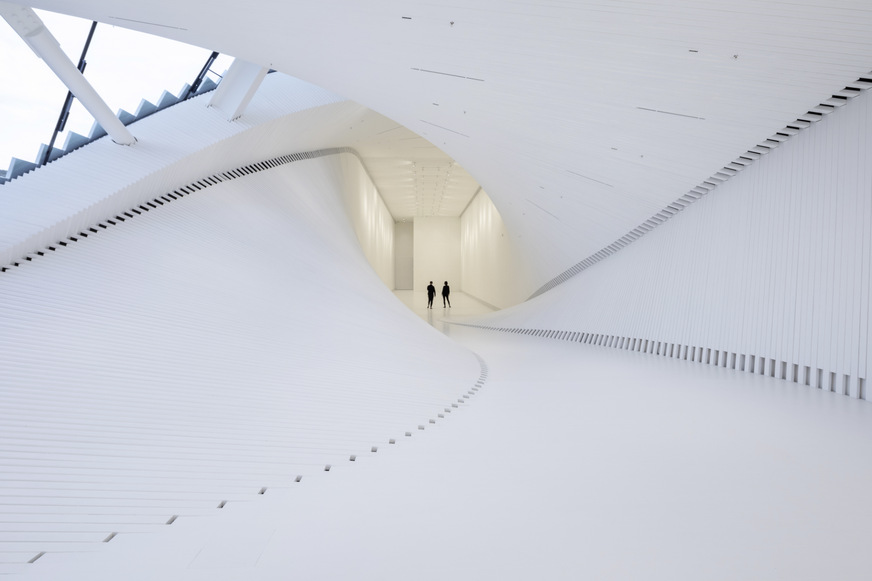
laurianghinitoiu_kistefosmuseum/Laurian Ghinitoi
The construction of the bridge is based on a steel truss that is largely hidden behind the metal facade. On the inside, the ceiling and walls or slopes are planked with strips of white wood 8 centimetres in width. The outer skin consists of 40 centimetre-wide aluminium panels.
Elsewhere in Norway:
Villa Melstokke in Norway with clear views over the Fjord
In the section where the building actually twists, these narrow panels fan out gradually to take up the curvature of the building. Meanwhile, the glass shell is integrated into the metal skin and follows the spiral movement by means of three-dimensionally shaped window panes.
Special glass from Berlin
The design and production of the installed glass was carried out by Saint-Gobain Glassolutions Objekt-Center Döring in Berlin. Project manager Michael Hering says: "The Kistefos project is unique in its type and execution and extremely demanding in terms of the complexity of the geometry. We curved ten elements totalling 98 square metres using Climaplus Contour. The largest panel measures 5.2×2.5 metres and weighs in at 1.2 tonnes, the smallest is 2.4×1.1 metres and only 255 kilograms.

laurianghinitoiu_kistefosmuseum/Laurian Ghinitoi
A 3D free-form was created for each panel, its curving shape was based on the architect's 3D BIM model. The panes were bent on a specially developed steel substructure at around 600°C using gravity bending.
4-layered laminated glass
The total element structure of the four-layer glass installed in The Twist is 55.04 millimetres, achieving sound insulation of Rw = 42 dB. The PVB film between the glass layers ensures reduced UV radiation, which protects the exhibited works of art from harmful solar radiation. Special U-profiles were used at the high edges with SG bonding; the glass facade was realised as a structural glazing facade.
The Twist was recently awarded the 'Oscar for Museums' by the network Leading Culture Destinations in the category Best Architecture.







